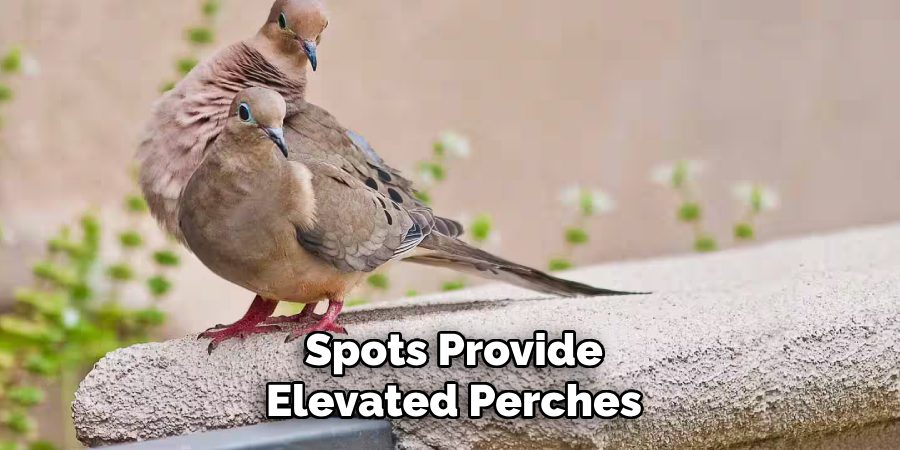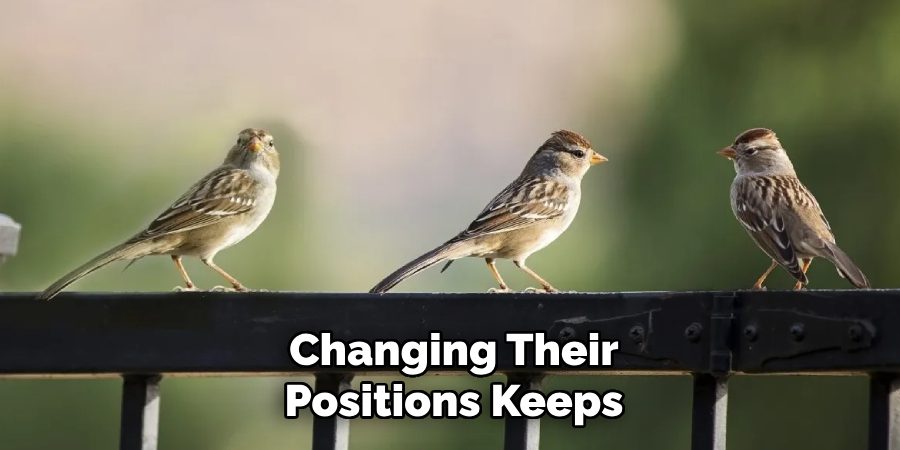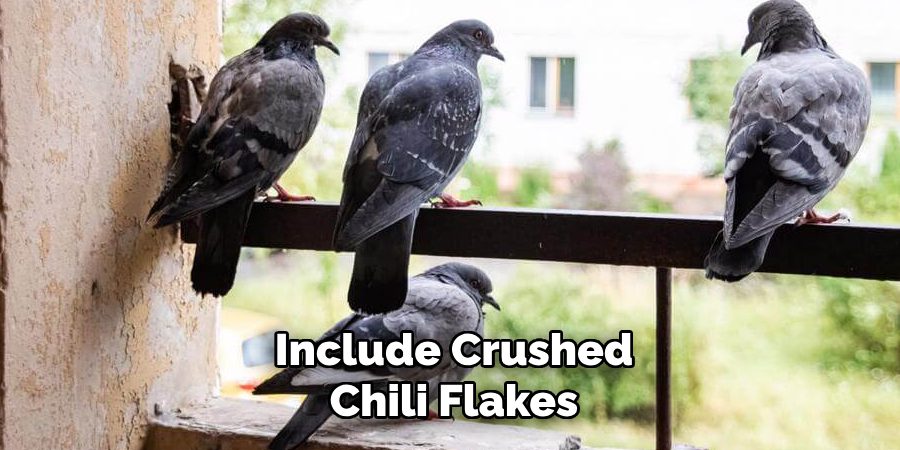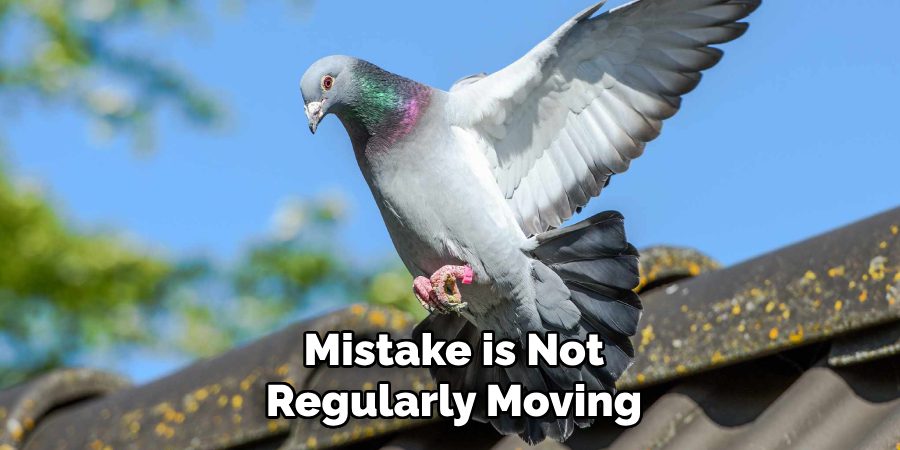Birds can quickly become a nuisance on patios, creating messes with their droppings, causing damage to outdoor furniture, and even posing potential health risks. Whether chirping loudly at odd hours or building nests in unwanted areas, these feathered visitors can disrupt the tranquility of your outdoor space. Many homeowners ask, “how do I keep birds off my patio?” The answer lies in using effective, humane methods to deter birds without causing them harm.

This guide provides practical tips and solutions to address common problems such as messy droppings, contaminated surfaces, and unsightly damage. Implementing these strategies allows you to enjoy a bird-free patio while promoting a safe and peaceful coexistence with local wildlife. Follow along as we outline a variety of proven techniques to reclaim your patio and maintain its cleanliness and usability for the long term.
Understanding Why Birds Are Attracted to Your Patio
Birds are drawn to patios for various reasons, and understanding these attractants is the first step toward managing their presence. By identifying the factors that make your patio an inviting bird space, you can take effective measures to reduce their visits.
Identifying Common Attractants
- Food Sources
Birds are opportunistic feeders and are often attracted to patios where they can find crumbs, leftover pet food, uncovered trash bins, or fallen fruit from nearby trees. Even small amounts of discarded food can act as a strong lure for these wildlife visitors.
- Water Sources
Patios that offer easy access to water serve as appealing stops for birds. Birdbaths, pet water bowls, or dripping faucets can provide hydration opportunities, especially during warmer months when natural water sources might be scarce.
- Shelter
Birds also seek areas that provide shelter or safe spots for nesting. Patio covers, awnings, and even outdoor furniture can serve as ideal nesting or resting locations, offering protection from predators and harsh weather conditions.
Recognizing the Most Active Areas
Birds tend to frequent specific areas, such as railings, roofs, and outdoor lights. These spots provide elevated perches where birds can rest, observe their surroundings, or prepare to forage. Recognizing these high-traffic areas on your patio will help you target efforts to deter unwanted activity effectively.

How Do I Keep Birds Off My Patio: Using Visual Deterrents to Scare Birds Away
Visual deterrents can be an effective method to keep birds from lingering on your patio. By creating visual cues that either confuse or intimidate them, you can discourage their presence without causing harm. Below are two highly effective strategies:
Step 1: Hanging Reflective Objects
Reflective surfaces are known to deter birds by producing unpredictable light flashes and movement, which can simulate danger or create discomfort. Items such as aluminum foil strips, old CDs, or reflective tape can be easily repurposed. Hang these objects from railings, awnings, trees, or wherever birds tend to gather. Position them in areas where they catch sunlight for the best results, as the glinting reflections significantly amplify their effectiveness. The combination of movement and light unsettles birds and reduces their desire to land or nest in those areas.
Step 2: Using Fake Predators
Simulating the presence of natural predators can also deter birds from approaching your patio. Owl decoys, hawk statues, or even rubber snakes can act as convincing threats. Place these decoys in strategic locations, such as near high-traffic areas or near sheltered spots where birds might seek to nest. To maintain their effectiveness, moving the fake predators periodically is crucial—leaving them stationary for too long may allow birds to recognize them as harmless over time. Regularly changing their positions keeps the illusion intact and maximizes their deterrent capability.

By implementing these simple visual deterrents, you can create an less appealing environment to birds and protect your patio from unwanted visitors.
How Do I Keep Birds Off My Patio: Using Sound-Based Bird Repellents
Sound can be an effective way to discourage birds from lingering on your patio. By creating an environment filled with noises that birds find unsettling, you can reduce their presence without causing harm. Below are two effective sound-based methods to deter birds:
Step 1: Installing Ultrasonic Bird Repellers
Ultrasonic bird repellers are devices designed to emit high-frequency sounds that are inaudible to humans but highly disturbing to birds. These devices are ideal for patios and other outdoor spaces that birds frequently visit. Ultrasonic repellers are easy to install and can cover a large area, making them a convenient, low-maintenance option for bird control. Ensure that the device you choose is appropriately positioned to maximize its range and adjust the settings as needed to suit the types of birds in your region.
Step 2: Playing Predator Calls or Wind Chimes
Many electronic devices and smartphone apps are available that can play pre-recorded predator calls, such as hawks or falcons, to frighten smaller birds. By mimicking the natural sounds of these predators, you can create an auditory threat that deters birds from visiting your patio. Alternatively, wind chimes or bells can serve as a passive auditory deterrent. Their unpredictable and constant noise creates a sense of unease for birds, discouraging them from nesting or loitering in the area. Position wind chimes in areas prone to bird activity for maximum effectiveness.

By incorporating sound-based repellents into your strategy, you add another layer of protection to keep your patio safe and bird-free.
Blocking Nesting and Perching Spots
Step 1: Installing Bird Spikes or Sloped Surfaces
Bird spikes are a practical solution to prevent birds from perching on railings, ledges, or other flat surfaces around your patio. These spikes are humane and discourage birds without harming them, making them an environmentally responsible choice. Similarly, sloped covers can be installed on beams, ledges, or other flat areas to make it difficult for birds to land or remain in place. These subtle modifications deter birds from loitering in areas they would otherwise find ideal for resting or gathering.
Step 2: Covering Open Spaces with Mesh or Netting
Bird netting is an excellent solution for blocking open spaces where birds might attempt to nest. Installing mesh or netting under patio roofs and other potential nesting spots is a physical barrier, ensuring birds cannot access these areas. This method is beneficial for preventing long-term nesting problems, as it stops birds from laying eggs or creating permanent homes. Opt for durable, weather-resistant materials to ensure the netting remains effective over time. When properly installed, bird netting blends into the environment while offering a discreet yet highly efficient way to safeguard your patio from bird activity.
Using Natural Repellents
Natural repellents offer a humane and eco-friendly way to deter birds from your patio. By leveraging scents and plants that birds find unappealing, you can create an environment that encourages them to keep their distance.
Step 1: Spraying Citrus or Vinegar Solutions
Birds are highly sensitive to strong smells; certain odors can act as natural deterrents. Citrus peels, vinegar, and chili sprays are effective options. Mix equal parts water and white vinegar or citrus juice in a spray bottle to create a citrus or vinegar-based spray. For added potency, you can include crushed chili flakes. Spray this solution around your patio’s edges, furniture, or any area where birds tend to gather. Reapply regularly, especially after rain, to maintain its effectiveness.

Step 2: Growing Bird-Repellent Plants
Another natural strategy is to incorporate bird-repellent plants into your patio’s design. Marigolds, lavender, and mint are particularly effective, as their strong scents act as natural deterrents. These plants not only help in keeping birds away but also enhance your patio’s aesthetics. By strategically placing these plants in pots or garden beds near common entry points or problem areas, you can reduce bird activity without causing harm.
Removing Food and Water Sources
An essential part of deterring birds from your patio is eliminating access to food and water that might attract them. Birds are opportunistic creatures, and even small scraps or puddles can entice them to linger.
Keeping Food and Drinks Covered
When you spend time on your patio, ensure that all food and drinks are covered when not in use. Leftover crumbs, open containers, or spills can quickly draw birds to the area. Use lids, covers, or sealable containers to minimize these attractants. After hosting meals or gatherings, promptly clean up any food debris to avoid creating an inviting environment.
Removing Pet Food Bowls After Use
Pet food can also attract birds if left out. Make it a habit to remove pet food bowls promptly after your pets have finished eating. Store pet food indoors or in sealed containers to prevent curious birds from scavenging.
Fixing Leaks and Removing Standing Water
Water sources such as leaks, puddles, or birdbaths can serve as magnets for birds. Regularly inspect your patio for any leaks or unintended water accumulation, and repair these promptly. Dump out standing water to discourage birds from visiting for hydration, thereby helping maintain a bird-free patio.
Common Mistakes to Avoid
When trying to keep birds away from your patio, some common mistakes can actually work against your efforts. One of these is using harmful chemicals or deterrents that can inadvertently harm other wildlife in the area. Always opt for safe, humane methods to avoid causing unnecessary environmental damage. Another mistake is not regularly moving visual or physical deterrents, such as reflective objects or scare devices.

Birds are intelligent creatures and can quickly adapt to static deterrents, rendering them ineffective over time. Additionally, feeding birds anywhere near your patio can create a pattern of attraction. Even if the food is placed away from your immediate area, birds may establish your patio as part of their feeding territory, leading to frequent visits. Avoiding these mistakes can significantly improve your chances of maintaining a bird-free patio.
Conclusion
Keeping your outdoor space free from unwanted avian visitors requires a combination of effective methods and consistent effort. Strategies like using reflective objects, hanging wind chimes, or placing decoys are highly effective when implemented thoughtfully. To answer the common question, “how do I keep birds off my patio,” it’s essential to use multiple solutions in tandem and adjust them periodically to outsmart birds’ adaptability. Regular maintenance, such as removing food sources and repositioning deterrents, ensures long-term success. You can enjoy a clean, bird-free patio while contributing to a harmonious coexistence with wildlife by staying proactive.

Professional Focus
Oliver Wood, a passionate patio designer, specializes in creating comfortable and inviting outdoor spaces that enhance relaxation and entertainment. His work combines a deep understanding of design with a love for nature, making him a standout professional in the field of outdoor living spaces. Through his thoughtful approach, he transforms everyday patios into extraordinary retreats for family and friends.
About the Author
Oliver Wood, a skilled patio designer, shares his expertise on outdoor living through his designs and insights. With a background in patio design and a genuine passion for creating beautiful spaces, he encourages others to invest in their outdoor environments, enhancing their homes with functional and inviting spaces for relaxation and entertainment.
Education History
University: Virginia Union University
Oliver’s education equipped him with the knowledge and skills to design patios that merge aesthetics with comfort, transforming outdoor areas into beautiful extensions of the home.
Expertise:
- Patio Design and Outdoor Living Spaces
- Functional and Aesthetic Landscaping
- Comfortable and Inviting Outdoor Environments
- Design Philosophy for Family-Oriented Spaces
- Creating Spaces for Relaxation and Entertainment
